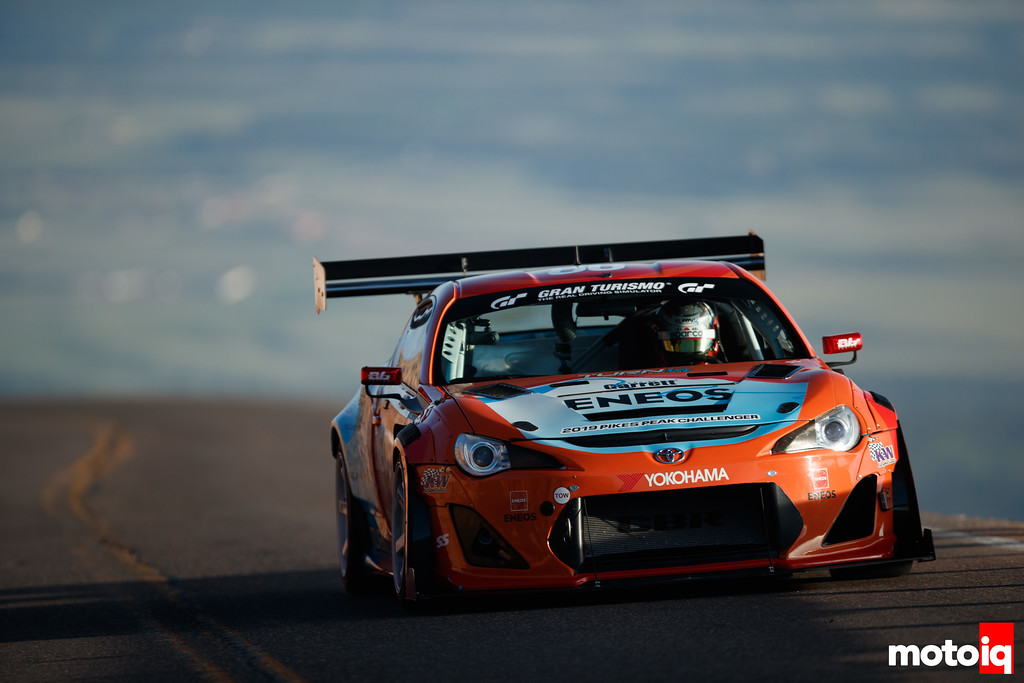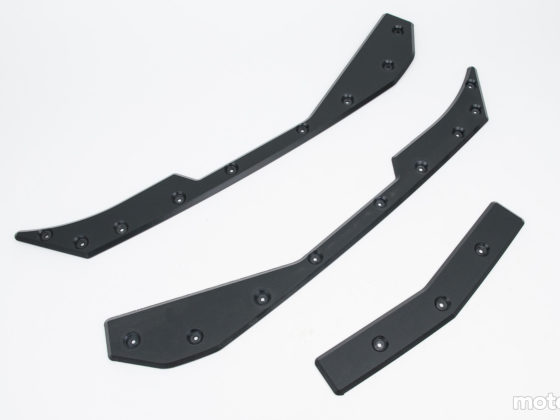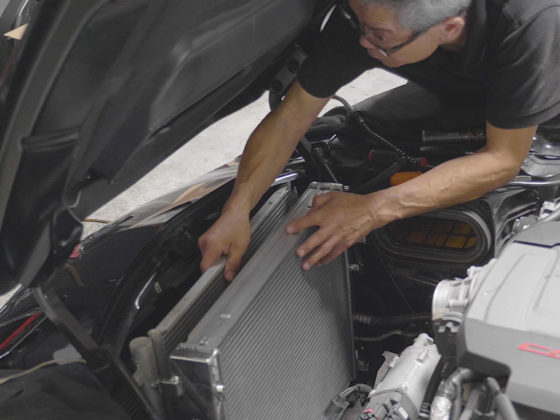
As the sun came up it got a little better. It seems like I am at the top of the world! Pikes Peak is the highest highway in North America. The sun is up and they are just starting to send cars. If all goes well they can make 2-3 runs each before the course is closed.

At the start, Dai gets staged up. The crew is fretting if they will release him while the tires are still warm. The road is oh so cold, damp and green with no rubber, not conducive for making good traction.

The Evasive/Eneos 86 was a big hit with the media and all cameras were always on the car and team. I think this is because the fans and press loved this grassroots tuner car against the high dollar factory race car thing. We were going to do our best to give them hell.

Dai was pretty relaxed. This was more than what the crew might say. Pikes Peak is probably the most dangerous event we do. A mistake could mean flying off a cliff, going into rocks or trees at high speed. There is no run-off and few guard rails. All of us were always worried for Dai’s safety. Not wanting to make him worry, we all held it in which made it worse.

The run to the summit is pretty tricky, the road is damp, cold and green. The pavement is also very bumpy and full of frost heaves. The pavement shifts and changes by the hours, big bumps can come and go in hours! Dai struggled with the bumps as we did not know what to expect and there are no places where we can test for this kind of surface. I struggled to get any temperature readings, the tires actually got a lot colder after the car left the line and I could not even get the pyrometer into the rubber. Toyo’s engineer broke his probe trying to get readings. The tire temps were in the 60-70 degree range! The tire pressures were actually falling over the run as well so we had to add air at the start! In my whole career, I have never had these sorts of conditions.




7 comments
Really cool article Mike, it made me think of a few questions though.
Does the aero noticeably get weaker as the car climbs? if so, would having driver/automatic tuneable suspension make a difference?
The car seem to have small endplates, are those rules limited as well? I would think gigantic endplates would be the default for a course like Pikes Peak.
About the turbo, does it spool up quicker and reach higher RPM in thinner air? So you would get better response but less overall power the higher you go? Unless it’s not limited by the friction on the compressor wheel…
Anyways TIL about racing with oxygen bottles on Pikes Peak.
The aero gets weaker as the car climbs higher, also the turns get tighter and for the most part lower speed. Having driver-adjustable suspension is not that useful because the driver is pretty busy on this course because very little of it is straight and if your chassis guy knows what he is doing the car is balanced high and low-speed aero load or not. A big endplate doesn’t mean much. It gives more room for sponsor logos. The end plates main job is to prevent spillover on the ends of the wing elements or front diffuser for that matter. The ones on our front diffuser also serve as vortex generators so they can only be around a certain size. That is what the weird looking shape is for. At high altitudes, compressor Overspeed and surge are for sure a thing and sometimes you have to reduce boost as the car climbs. Watching that situation is something that is a headache that kicks a lot of people’s ass.
Oh, I thought endplates had a big effect on yaw control, like the shark fins on WEC cars, but if they have a big effect on the budget aren’t they even more useful!? hahaha.
Good to know about boost control at altitude, I just realized that pikes peak is even higher than the Andros Trophy in the french alps. The mexico GP is only half that and they have trouble.
The shark fins don’t do anything in CFD and wind tunnel, at least when they were first tested. They did give more advertising space.
Mike! Do you have any kind of fan setup behind the radiator? Or do you get enough air flow from how fast the car is going up the track?
Yes a pretty large fan, I think its a Spal.
Great article, I love the prep perspective to go with the technical articles.
It seems like you were prepping at Pikes Peak for about a week?